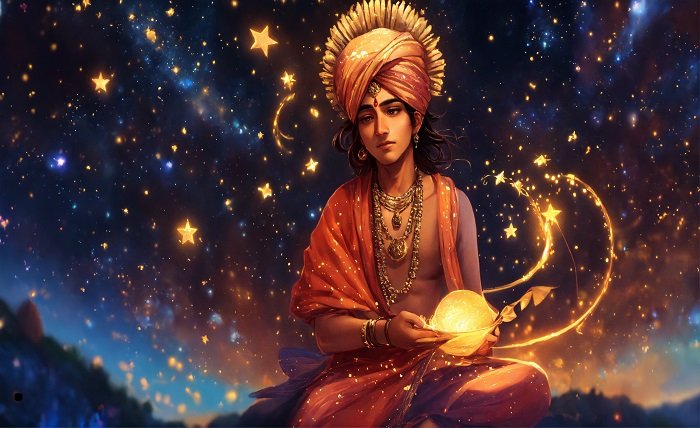Happy Ram Navami – A Complete Guide to Celebrating the Auspicious Festival with Devotion
Happy Ram Navami is celebrated with great devotion across India as it marks the birth of Lord Rama, the seventh incarnation of Lord Vishnu. Devotees consider Happy Ram Navami not only as a religious occasion but also as a reminder of the values of truth, dharma, and righteousness. The festival of Happy Ram Navami inspires people to follow the noble path shown by Lord Rama and live a life full of integrity and devotion. Celebrating Happy Ram Navami gives every devotee an opportunity to immerse in prayers, chants, and rituals dedicated to the divine hero of the Ramayana.
Happy Ram Navami is particularly significant because it falls on the ninth day of Chaitra Navratri, a time when the atmosphere is already filled with spirituality and reverence for the divine feminine. On Happy Ram Navami, many devotees observe fasts, participate in bhajans, and read verses from the Ramcharitmanas or Ramayana. By celebrating Happy Ram Navami, people not only remember Lord Rama’s birth but also strengthen their faith in dharma and good values.
The Historical Importance of Happy Ram Navami
Happy Ram Navami has been celebrated for centuries, and its history is deeply rooted in Hindu scriptures. According to the Ramayana, Lord Rama was born in Ayodhya to King Dasharatha and Queen Kaushalya on the ninth day of Chaitra month. This sacred event is the very reason why people say Happy Ram Navami with so much joy and enthusiasm. Every Happy Ram Navami, temples are decorated beautifully, idols of Lord Rama are worshipped, and processions are taken out in Ayodhya and across the country.
The history of Happy Ram Navami is not limited to mythology but also extends to India’s cultural and spiritual heritage. The day of Happy Ram Navami has inspired poets, saints, and philosophers to spread the message of dharma and righteousness. Celebrating Happy Ram Navami today connects modern devotees with the traditions that have been passed down for generations. Each Happy Ram Navami festival is thus a blend of history, devotion, and cultural pride.
Rituals and Traditions of Happy Ram Navami
Happy Ram Navami is marked by a variety of rituals that hold deep spiritual meaning. One of the most important customs of Happy Ram Navami is the ceremonial bathing of baby idols of Lord Rama, symbolizing His divine birth. Devotees chant mantras and sing devotional songs throughout the day of Happy Ram Navami. Many people decorate their homes and temples with flowers, diyas, and rangoli to welcome the divine presence of Lord Rama.
Another prominent tradition of Happy Ram Navami is the organization of Akhand Ramayana Path, where devotees recite the entire Ramayana without a break. Fasting on Happy Ram Navami is also common, with some devotees consuming only fruits and milk. The tradition of taking out Rath Yatras and Shobha Yatras is another significant aspect of celebrating Happy Ram Navami. These rituals of Happy Ram Navami bring communities together and remind everyone of the unity and strength in devotion.
Celebrating Happy Ram Navami at Home
Happy Ram Navami is not just celebrated in temples but also in households with great love and devotion. Families wake up early on Happy Ram Navami, clean their homes, and set up altars with pictures or idols of Lord Rama, Goddess Sita, Lord Lakshman, and Lord Hanuman. On Happy Ram Navami, prayers are offered, mantras are recited, and special bhajans are sung in the home environment.
Cooking special dishes and offering prasad is another essential part of celebrating Happy Ram Navami at home. Simple and sattvic meals are prepared to honor the spiritual essence of the day. By observing fasts on Happy Ram Navami, devotees feel more connected to the divine energy of Lord Rama. Families also read the Ramcharitmanas together on Happy Ram Navami, making it an occasion that strengthens both spiritual values and family bonds.
The Joy of Happy Ram Navami in Ayodhya
Happy Ram Navami in Ayodhya holds unmatched importance as Ayodhya is the birthplace of Lord Rama. Thousands of devotees travel to Ayodhya to experience the grandeur of Happy Ram Navami celebrations. The city glows with lights, temples are adorned with flowers, and massive processions honor Lord Rama on Happy Ram Navami. Pilgrims take a holy dip in the Sarayu River before visiting the Ram Janmabhoomi temple on Happy Ram Navami.
The spirit of Happy Ram Navami in Ayodhya reflects unity and devotion on a massive scale. Cultural programs, devotional singing, and plays depicting the Ramayana are organized throughout the city on Happy Ram Navami. For devotees, witnessing Happy Ram Navami in Ayodhya is a lifetime experience that strengthens their faith. The unique energy of Ayodhya on Happy Ram Navami makes it a sacred pilgrimage destination for millions around the world.
Global Celebrations of Happy Ram Navami
Happy Ram Navami is not only celebrated in India but also across the globe where Hindu communities thrive. In countries like Nepal, Mauritius, Trinidad, Fiji, and the United States, devotees come together to celebrate Happy Ram Navami with devotion. Temples organize special prayers, bhajans, and community feasts on Happy Ram Navami, ensuring that people living far from India still feel connected to their cultural roots.
In the global context, Happy Ram Navami represents the spread of Hindu traditions beyond borders. It is a way for devotees to stay united with their heritage and celebrate their identity. Many international organizations also arrange cultural events and lectures on Happy Ram Navami to spread awareness about the significance of Lord Rama’s life. Thus, Happy Ram Navami has truly become a festival of universal devotion and harmony.
Ways to Share Greetings and Wishes on Happy Ram Navami
Happy Ram Navami is a time when people exchange warm greetings and blessings with their loved ones. Sending messages of Happy Ram Navami to friends and family has become a popular way of spreading joy. Social media platforms are filled with quotes, images, and wishes that carry the essence of Happy Ram Navami. Devotees often share verses from the Ramayana or quotes about Lord Rama to mark the auspicious day of Happy Ram Navami.
Creating personalized greeting cards or sharing digital wishes is another modern way of celebrating Happy Ram Navami. Many people also call their relatives and friends to say Happy Ram Navami with heartfelt prayers for their well-being. Community groups often organize virtual gatherings to sing bhajans together on Happy Ram Navami. Whether through traditional or modern means, sharing wishes on Happy Ram Navami strengthens relationships and spreads positivity.
Conclusion
Happy Ram Navami is much more than a festival—it is a reminder of the eternal values of truth, righteousness, and devotion embodied by Lord Rama. From Ayodhya to every corner of the world, Happy Ram Navami unites devotees in prayers, rituals, and celebrations. By observing fasts, chanting hymns, and sharing wishes, people keep alive the spiritual essence of Happy Ram Navami. Whether celebrated at home, in temples, or across communities, Happy Ram Navami continues to inspire generations to walk the path of dharma and compassion.
FAQs
1: What is the significance of Happy Ram Navami?
Happy Ram Navami marks the birth of Lord Rama, symbolizing the victory of good over evil and inspiring people to follow righteousness.
2: How is Happy Ram Navami celebrated at home?
On Happy Ram Navami, devotees clean their homes, set up altars, chant prayers, observe fasts, and prepare sattvic meals as offerings.
3: Why is Ayodhya important for Happy Ram Navami?
Ayodhya is Lord Rama’s birthplace, making Happy Ram Navami celebrations there especially grand with rituals, processions, and prayers.
4: Do people outside India celebrate Happy Ram Navami?
Yes, Hindu communities worldwide celebrate Happy Ram Navami in temples and cultural centers with prayers, bhajans, and community feasts.
5: What greetings can I share on Happy Ram Navami?
You can say Happy Ram Navami by sending messages, quotes from Ramayana, devotional images, or personal prayers for loved ones.







